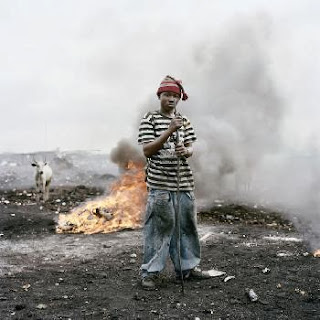I really enjoyed my chosen elective of
Sustainable Design. The series of lectures really opened my eyes to the amount
of work designers are performing to help promote and encourage
sustainability. The lectures
taught me not only about the problems within our current environment, but also
the solutions that creative’s are coming up with to help solve them. TED’s Ten
strategies revealed different methods of how change can be made. The ten
strategies also helped me section each design and designer into different
categories on what and the reasons why for their designs.
Learning about environmental issues around
the world really fascinated me, as well as learning about design solutions for
them. This elective revealed to me the vast amount of creativity and energy
there is behind the sustainable design industry. I had no idea before hand how
alive and relevant it is to our every day lives. When thinking about my own
designs now, I am much more conscious of the implications and consequences of
certain design choices. In the future, I hope to design sustainably, for a
customer that is aware of their environmental impact and desire to change it.
The system of a blog helped me keep all my research findings and thoughts in a clarified format.
Throughout the elective I have become more
and more interested in the social side of sustainable design. Design that
improves the welfare of those who help make the products really inspires me. I
hope that my designs can benefit people in that way someday too. On one of our very first lectures we
learnt about the designer Florie Salnot. Salnot is a designer who created a
method of making beautifully delicate and unique jewelry using plastic bottles
from Saharawi. These pieces are created by women from refugee camps in the
desert, giving them financial independence since living in exile. I love the
simplicity of taking something that once was rubbish like a plastic bottle and
turning it into a treasured object that changes people’s lives. By thinking of
alternative uses for unwanted objects, the environment as well as the people
within it can be saved.
Before I studied sustainable design in any
depth, I thought that sustainable design was less beautiful because the
aesthetics had to be sacrificed due to the production. This elective opened my
eyes to the stunning sustainable designs across the world. A design company
that really stood out to me aesthetically was Studio Swine. They married the
idea of sustainably and beauty perfectly in lots of their products. Their ‘Hair
Glasses’ is an example of unique and beautiful. Not only this, being made from
human hair, the product is biodegradable and therefore sustainable too. There
is so much more value in sustainable products than just aesthetics, the story
behind them adds to their physical appearance. If something is made with
consideration to the environment and the people within it, in my eyes it makes
the product so much more valuable.
Sustainable design to me is about working
with what is available and exploring the different possibilities to the
solutions of design we have today. Our environment is in continuous change
therefore our design solutions need constantly changing too. It’s exciting to
have had the opportunity to explore what sustainable designers are currently researching
and creating. Design is an integral part of our environments future, which is
an exciting prospect yet a huge responsibility for designers around the world.














